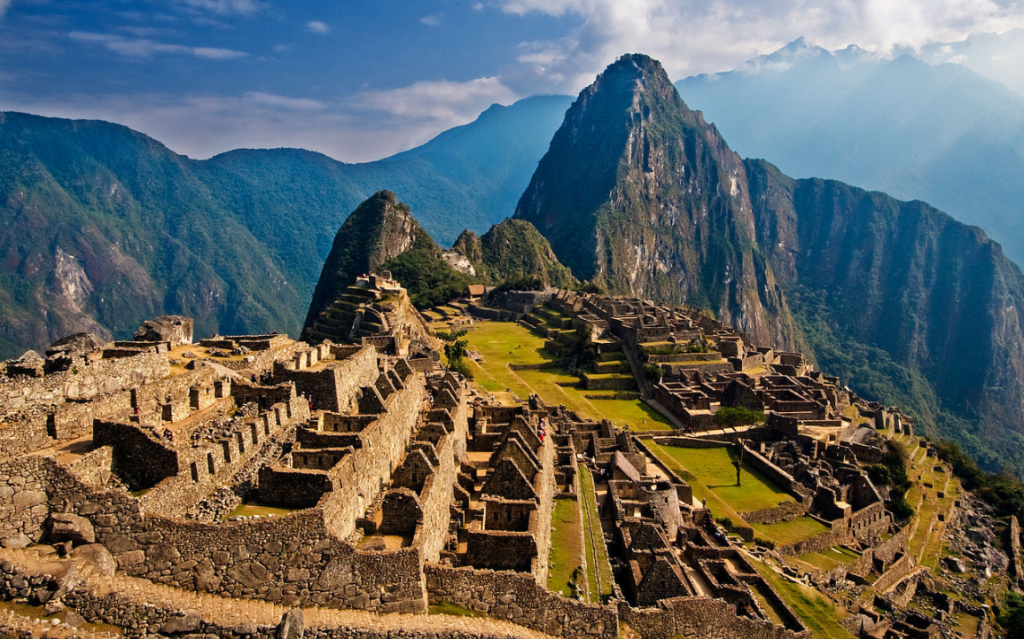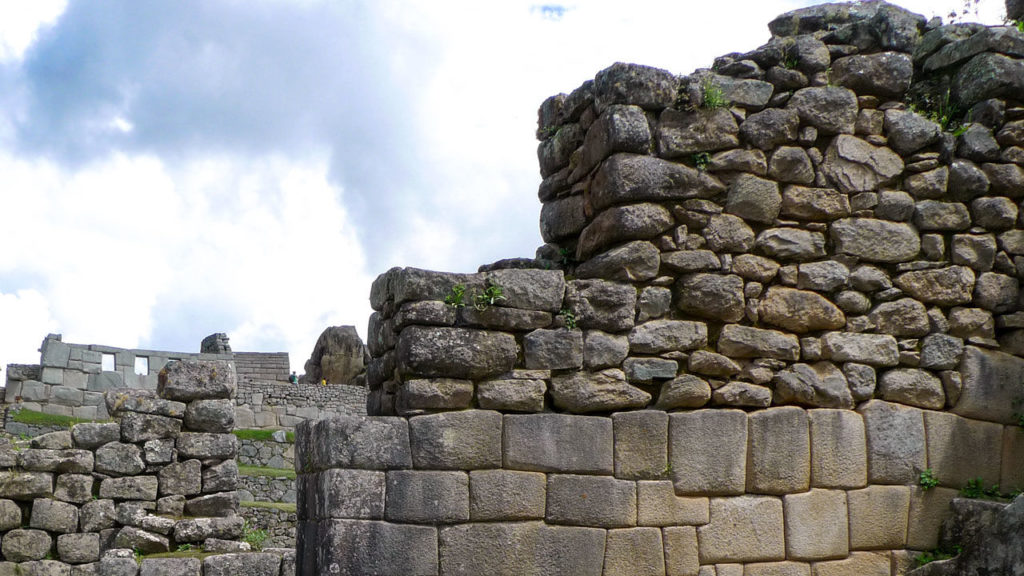The ancient city of Machu Picchu, perched among the peaks of southern Peru, flourished for just over a hundred years between the mid-15th and mid-16th centuries. It is famous for its intricate, masterful stone masonry. But often invisible to the untrained eye is masterful drainage infrastructure and slope stabilization. 
Ruth Wright, a historian, travel writer, and environmental activist and her husband Ken Wright, a civil engineer, have studied Machu Picchu over some two dozen trips. “It’s not a haphazard project,” she says, “but a completely designed city.”
The site receives up to 80 inches of rain annually, sits atop steep landslide-prone slopes, and lies upon active fault lines. Despite these obstacles, it has survived more than 500 years of weather and earthquakes and is in remarkable condition. The Inca lacked many of the tools you might think would be necessary for such an undertaking. “They did not have the wheel, they did not have iron or steel, and they did not have written language,” Ken says. “It would seem impossible that they could build something like this.”
Machu Picchu was a royal estate, constructed at the command of the ruler Pachacuti, who founded the Inca Empire. First, they located the city’s water source, a spring on the north slope of Machu Picchu Mountain. They built a stone canal to carry up to 26 gallons of water per minute toward the urban center.
The Temple of the Sun, a solar observatory and religious center, is the focal point of the city. It is also the only structure with curved walls, parts of which sit atop an enormous boulder rather than a traditional foundation. The Inca often built to display and accentuate the natural landscape. “They could take the top off a mountain and it looks better than it did before,” says Vince Lee, an architect who has studied Inca cities for decades.
The walled-in urban sector included another 170 or so buildings. The design of these structures seems to be laid out based on a set of rules. For example, the windows are typically the length of a forearm, and the space between them two forearms. “They standardized it,” Ruth says. “You can go into the forest and find a stone building and know it’s Inca because they’re all the same.”
“The reason that Machu Picchu has stood up over five centuries was because of good drainage,” Ken says. “The terraces that line the hillsides below the city, besides adapting the slopes to agriculture, also protected them from runoff and erosion. They came complete with stone retaining walls and carefully layered soil to help water drain into the ground. They even have a high point at the center to prevent rain from collecting.”
The granite stairways and walkways doubled as a network of runoff channels, all feeding water into a main drain that discharged into the rain forest below the city. “They were masters at sustainability,” Ruth says. Lee notes that “they cared about the planet,” calling it Pachamama, or Mother Earth. “They had this philosophy that if you’re going to mess with it, you better do it right.”

Ken has estimated that 60 percent of the construction is underground. But what first strikes the visitor is the exquisite stonework of the city’s most elegant buildings. Without mortar, using a technique called ashlar, the Inca fit finely carved granite stones together with such precision that a piece of paper cannot be inserted between them.
Many stones are not only painstakingly molded, but also massive. The carving was only half the task, and then came transportation and placement. Considering the Inca often handled weights of 10 to 15 tons, it’s no wonder many believe they had alien assistance.
For the lighter stones, tumbling would suffice. Heavier ones could be dragged over cobblestone beds, to reduce friction. Or, as Lee has field-tested, they could be placed on sleds and moved up an inclined plane along a ladder-like apparatus, levered from one wrung to the next. Researchers understand less about how they raised and lowered these behemoths into place. “They had a limited toolbox,” Lee says, “and they probably knew more about moving giant rocks than we could imagine in our wildest dreams.”
The roofs that once covered these edifices were straw thatching; a few early western visitors documented their sophistication. “If you read the Spanish chronicles,” Lee says, “they were as admiring of the roofs as they were of the stone walls.”
Within a century of its rise, this grand civilization crumbled amid the Spanish invasion of South America. But Machu Picchu still stands. Today it looks almost as though the Inca could move right back in, given new roofs and furnishings. For how many of our modern cities could we say the same? “These guys were just as smart as we are,” Lee says. “They knew what they were doing.”
You can read the original article at www.discovermagazine.com

Join us as we uncover the mysteries of Machu Picchu, taking you on a tour across time to try and find some answers to one of the world’s greatest puzzles. Because of its proximity to Cusco, some archeologists presume it was used as a getaway for city nobles. Others argue it has more practical roots, such as for crop testing, trading, or even possibly a prison .
Great topic related to Earthbags, very poignant. I did some research into the foundations at Machu Pichu, with ideas about how they were made, and if you’re pondering the use of Earthbags, this is some great insight.
How do you think they were made?